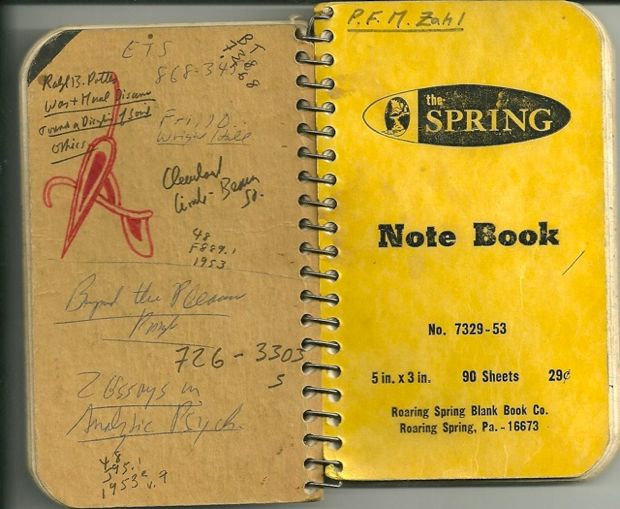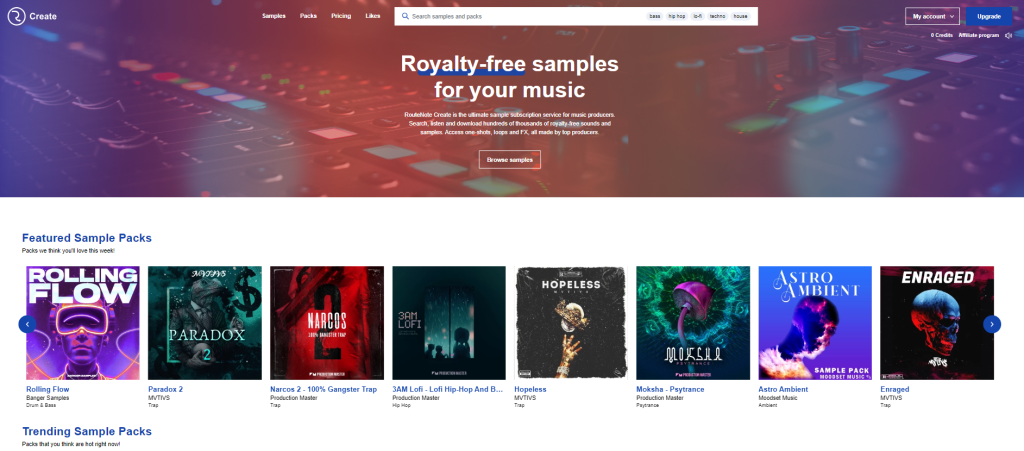10 useful tips for starting songs
We’ve all been there. You get in the studio eager to cook up something earthshakingly awesome! You fire up your DAW but find yourself suffering an acute case of Blank session syndrome (the inability to get started on a musical composition) Fear not! In this article, I will be sharing 10 useful tips for starting songs that may help overcome this most crippling of conditions.
1: Carry a notebook

Ok so this first one is more about prep work but writing ideas down as soon as they strike is a tried and tested method. Our brains don’t always work on command. Chances are that fantastically original song idea strikes bang in the middle of doing the dishes. And with a mobile device usually within arms reach there’s no excuse for not making a note of your idea. And if it’s a melody then a good old voice note will save it for future prosperity.
2: Sample scouring
There’s a reason samples and sampling is so popular. Samples make fantastic sources of inspiration. So spend some time ploughing through your favourite sample resources until something springs out and inspires you. (Looking for high quality, great value royalty-free sounds? We have you covered here at RouteNote Create).

Whether you choose to loop or flip your samples is up to you. You don’t even have to directly lift the sample audio. Let the melody, chords, sound and general vibe of the sample inspire you to create your own version. The main thing is, you’ve made it off the starting line and who knows where that sampled inspiration will take your track.
3: Exit your comfort zone
Most of us find ourselves getting into familiar workflows and routines from time to time. Be it sticking to a rigid musical genre, using the same old instrument sounds or more often than not employing the same production techniques. Why not challenge yourself and try experimenting with different compositional approaches?
If you’re a house producer maybe give psytrance a go. Boom Bap Hip-Hop head? See what you can do over some trap-inspired drums. And finally, all you trap heads, why not banish yourself from using any 808 drums? OK, that one might be a bit of a challenge.
The amazing thing about modern production is the almost limitless access to every instrument and sound under the sun. Yet many of us will stick with tried and tested instruments, the Fender Rhodes being a prime example. Experimenting with alternative less obvious instrumentation can often inspire whole new musical directions.
Finally, Do you always start your tracks with drums or are you a melody-first type? Try flipping it i.e. if you’re a drum starter try building from a melody and vice versa. What’s the worst that could happen?
4: You hum it – I’ll play it

Probably the most immediate method of melody composition employs voice-to-midi technology. This software will take your best sung, hummed, warbled and even whistled efforts, and convert it to midi in real-time.
This is a godsend for those who do not formally play an instrument. As long as you can get on a mic and produce some form of not-too-flat melody then you’re away. Of course, you will have to over-dub in order to build chord structures. And the good news is you can get started with voice-to-midi for free with Dodo midi 2. Alternatively, Dubler 2 is a highly advanced Voice-to-midi tool but at £189 it comes at a price.
5: Collaboration
It’s no accident that some of the greatest producers and songwriters worked in teams. Think ‘The Chemical Brothers’, ‘The Neptunes’, ‘Stargate’, ‘Holland’, ‘Dozier and Holland’ to name just a few.
Music production and composition can sometimes feel like a rather lonely pursuit so having someone to spark ideas off can be invaluable. This can be particularly crucial when trying to lay the initial foundations of a track. You don’t even necessarily have to be working together in the same room. You could collaborate with other musicians remotely. It’s common now for music files to be sent back and forth often over thousands of miles. For instance, you may know a talented musician that could send you some unique samples. You could then build something around these samples sending the results back and forth until a collaborative masterpiece is born.
6: Extract-a-chord

Arguably the most tried and tested way to start a track is with a good old-fashioned chord progression. While copying a highly distinctive chord progression equates to plagiarism, chords in themselves cannot be copyrighted. There’s nothing wrong with sourcing a selection of chords from a favourite recording and re-arranging them to create your own progression.
There are many different techniques you could employ to rearrange chords. You can do this manually by using audio-to-midi conversion (see this article for more details on this). Alternatively, tools such as Captain Chords, Instachord 2 and Scaler 2 offer a streamlined workflow enabling you to analyse and easily re-arrange chords. You can even apply different playing styles to the chords.
7: Build from the b-line
It can sometimes be intimidating trying to find an original and interesting chord progression to build upon. Especially if your playing skills are limited. So, why not start a track from the bottom end up. As basslines are generally monophonic in nature they’re less of a challenge to lay down. Simply dial up a deadly synth-bass and get dirty with it over a tasty drum track. With a killer b-line and rhythm in place, you can start building chords, melodies and textures on top.
8: Field recording

It can sometimes be quite refreshing to step away from the screen and venture out into the big wide world. And with the advent of mobile devices, we all have the facility to capture audio on the move. A walk in the woods can offer a sonic feast of opportunities. Snapping branches for snare drums, kicked leaves for percussive effects or even bird song for an early 90s-style techno track. Nature is awash with inspirational sounds.
And if you’re not blessed with any nearby woodland why not raid the kitchen cupboards or maybe even the kid’s toy boxes? With the endless processing opportunities available in your modern DAW almost anything can be turned into sonic gold.
9: Set yourself a brief
Having so many musical tools at your disposal is a truly liberating thing. For some people It can also be rather overwhelming. Especially when you’re sat in front of a blank DAW session with a world of musical potential at your fingertips. It can therefore be very useful to think of a specific concept for your track and stick rigidly to it.
Why not write a short brief for the track you are about to build? This could include the mood, tempo, instrument selection, as well as any possible references to other tracks. It might also help to determine what the purpose of the track is before committing a single midi note. Is it going to be an album cut or single release? A remix? A cover? Vocal track or instrumental? Maybe your beat is for a singer or rapper? If so work out the ‘type beat’ artist you are targeting your beat at.
10: Make your own samples

Sometimes sitting down to create a full composition can be a rather daunting prospect. Or there may be days when your compositional juices just aren’t flowing. Rather than simply giving up and ploughing on with that new TV series why not turn your mind to sound design and sample making? You could spend a few hours noodling away on some VSTs’ creating original presets for future use. Or why not create some tasty loops? Sample creation can be a really liberating experience as you just need to worry about making short loops rather than being encumbered by the pressure of producing and arranging an entire track.
Final thoughts
I hope some of these ideas might prove helpful when faced with a case of blank session syndrome. If you find yourself struggling give some of these a go and see if they help to break the creative deadlock. The main thing is to not pile too much pressure on yourself. Creativity is not a tap we can turn on and off. You have to just go with the flow and not try to force it as the inspiration WILL come!
And once you do get some ideas going and start building a banger you will have to face that other big pitfall of music production. How to finish a track!!!!
Remember – RouteNote Create subscriptions start from as little as $2.99, and you also get 10 FREE credits to spend on samples when you sign-up as well as your FREE sample bundle!
